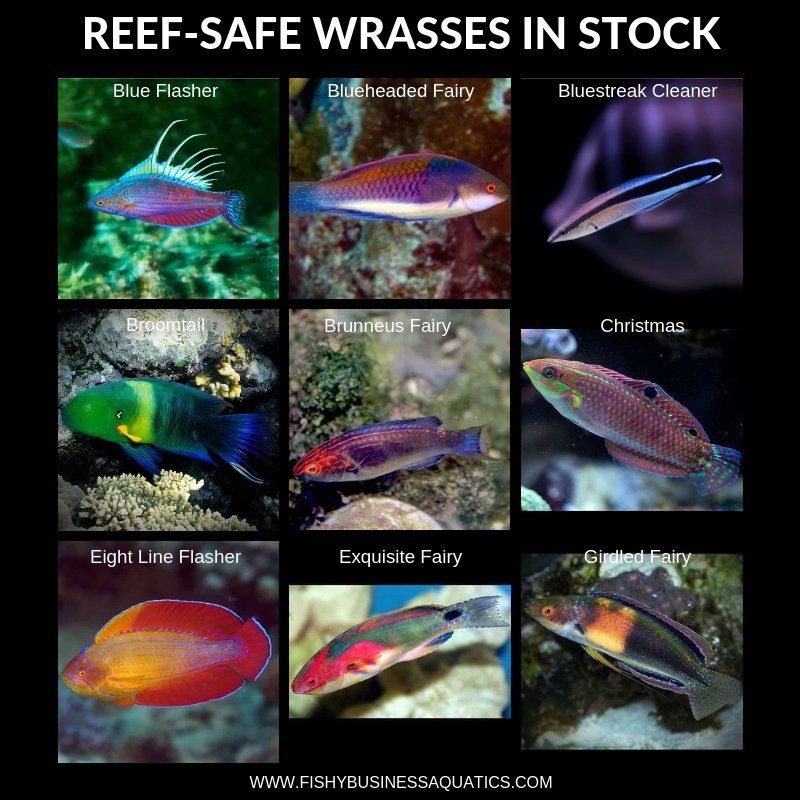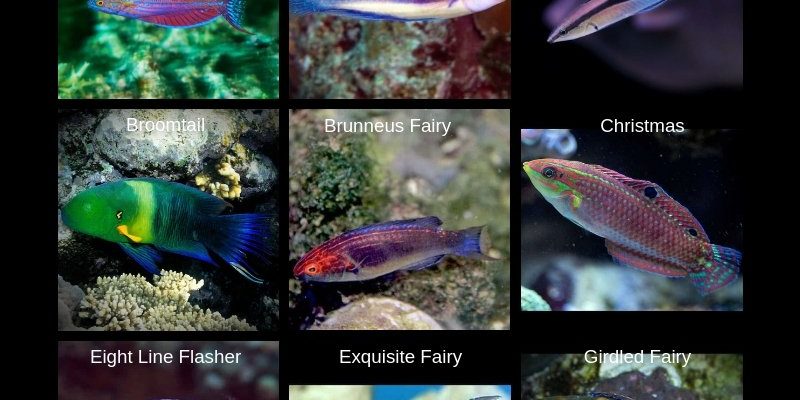
The term “reef safe” isn’t just a label; it’s a crucial consideration for anyone interested in maintaining a thriving aquarium. Just as you wouldn’t throw just any ingredient into a beloved recipe, you want to choose your fish wisely when creating a balanced ecosystem. So, let’s dive into the vibrant world of wrasses and their compatibility with coral!
What Are Wrasses?
Wrasses are a diverse group of fish belonging to the Labridae family. There are over 600 species of wrasses, and they can be found in various marine habitats, particularly around coral reefs. They come in an array of stunning colors and patterns, often making them a top choice for aquarium enthusiasts. You might spot them darting in and out of corals, showcasing their playful behavior.
These fish typically have a slender body and a unique jaw structure, allowing them to feed on small invertebrates, including parasites that sometimes plague other reef fish. So, not only are they beautiful, but they also play an important role in keeping your tank healthy.
However, while wrasses are engaging and visually appealing, not all are suitable for reef tanks. Understanding which types are safe for coral environments is essential.
Are All Wrasses Reef Safe?
Here’s the thing: Not all wrasses are created equal when it comes to being reef safe. Some species, like the Six-Line Wrasse, are often considered safe for reef tanks. They tend to be friendly towards corals and the majority of other fish. However, other species may pose a risk to delicate coral or smaller tank mates.
Some wrasses can be territorial or aggressive, particularly during breeding or if they feel threatened. This behavior can lead to stress in your tank, causing damage to your corals or even leading to the death of smaller organisms.
So, as you’re considering a wrasse for your reef, do a little homework on the specific species. Some popular reef-safe wrasses include:
- Six-Line Wrasse
- Flame Wrasse
- McCosker’s Wrasse
Each species has its own personality and needs, so understanding these will help you maintain harmony in your tank.
Benefits of Keeping Wrasses in a Reef Tank
If you choose the right wrasse for your reef, you could experience several benefits. First, these fish are excellent pest controllers. They love to snack on pests like flatworms and even some algae, helping keep your tank cleaner and healthier. Think of them as tiny, adorable janitors—always on duty!
Additionally, wrasses are generally known for their dynamic behavior. Their playful swimming and colorful displays can really bring your aquarium to life, making it a joy to watch. They can also help break up aggression between other fish by keeping the mood lively and active.
Moreover, some wrasses have a unique ability to change colors or genders. This fascinating trait can truly enhance the visual experience in your tank. So, having wrasses can add both beauty and functionality to your reef setup. However, always keep in mind their compatibility with corals!
Choosing the Right Corals for Wrasses
If you’re going to house wrasses with corals, it’s essential to choose the right types of corals. Some corals are more resilient and likely to thrive alongside wrasses, while others are delicate and may not fare as well.
For example, hard corals like Acropora and Montipora can be quite forgiving. They tend to withstand the lively nature of wrasses better than some soft corals, like Xenia or Zoanthids, which can be more sensitive to disturbances.
Also, make sure to create a stable environment for both your fish and corals. Wrasses thrive best in well-maintained tanks with stable water conditions, good flow, and proper lighting. By keeping everything balanced, you’re setting your entire reef tank up for success.
Common Issues with Wrasses and Coral Compatibility
Despite their various benefits, there are a few common issues you might encounter when keeping wrasses and corals together. One concern is that some wrasses are known to nip at soft corals, particularly if they’re feeling peckish. This behavior can lead to stressed corals, which might eventually decline.
Another issue can arise from the territorial behavior of some wrasses. For instance, if you introduce a new wrasse to an established tank, it might cause disruptions within the community. To avoid this, consider adding the new fish to your aquarium during the evening when fish are less likely to be aggressive.
Lastly, be aware that some wrasses may dig in the substrate to create hiding spots or nests. This activity can disturb corals, potentially uprooting them or affecting their health. To mitigate this, ensure you have a well-planned aquascape that features stable rock formations rather than loose substrate that could be easily disturbed.
Tips for Introducing Wrasses to Your Reef Tank
Introducing new fish into your aquarium should be approached with care. First, always quarantine new wrasses before adding them to your main tank. This minimizes the risk of introducing parasites or diseases to your established ecosystem.
When you’re ready to introduce them, consider using the “drip acclimation” method. This slow acclimation process helps fish adjust to the water conditions without experiencing shock, leading to a smoother transition.
Once they’re in your tank, keep an eye on their behavior. Look for signs of aggression or stress among your corals and other inhabitants. If you notice any issues, it might be necessary to rearrange your aquascape or even isolate the wrasse temporarily.
Overall, patience is key. Allow your new wrasses to settle in and establish their place in the community. This will help maintain harmony in your vibrant reef ecosystem.
So, is the wrasse reef safe? The answer often depends on the specific species and the overall dynamics of your tank. Wrasses can offer a lot of benefits when chosen carefully, but they also require a thoughtful approach to ensure compatibility with corals.
By doing your research, considering their behavioral traits, and selecting the right corals, you can create a thriving, colorful aquarium that showcases the beauty of both wrasses and corals. Remember, every aquarium is unique. Embrace the journey of discovery, and you’ll find the right balance for your own underwater world. Happy fishkeeping!

